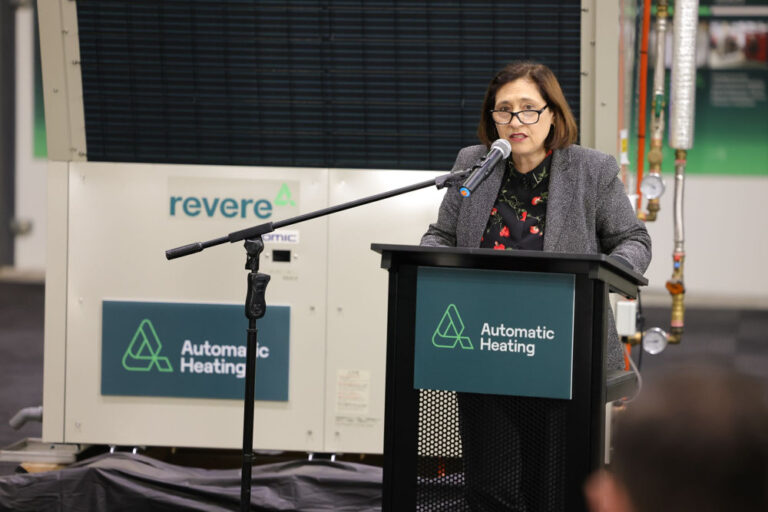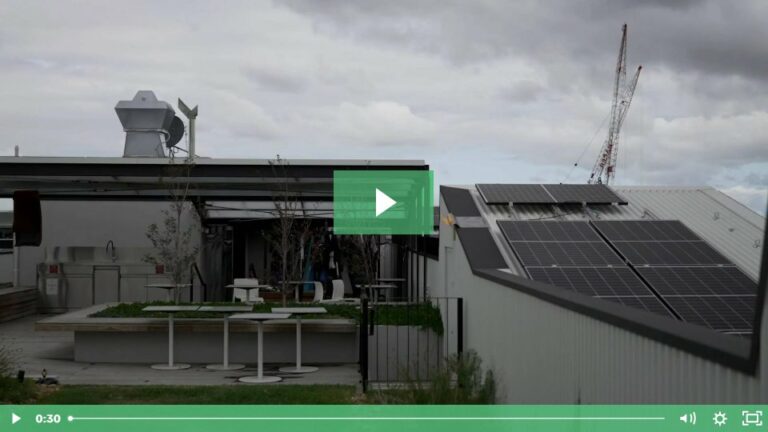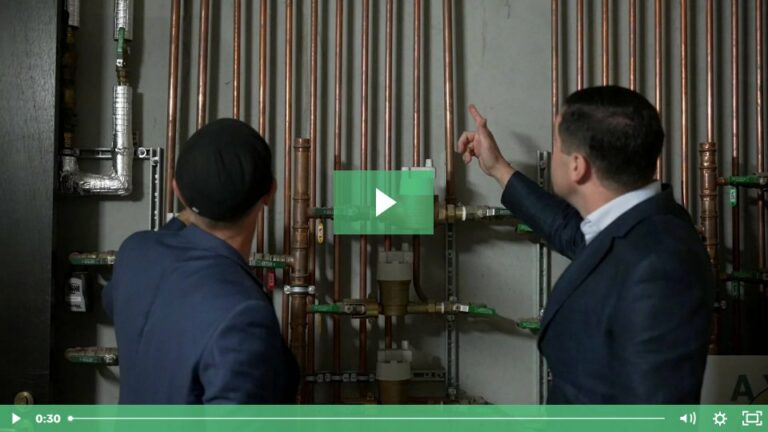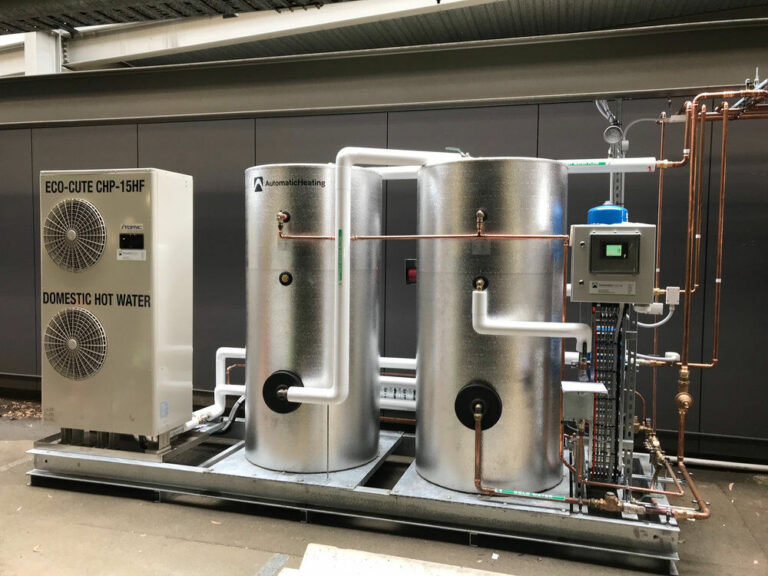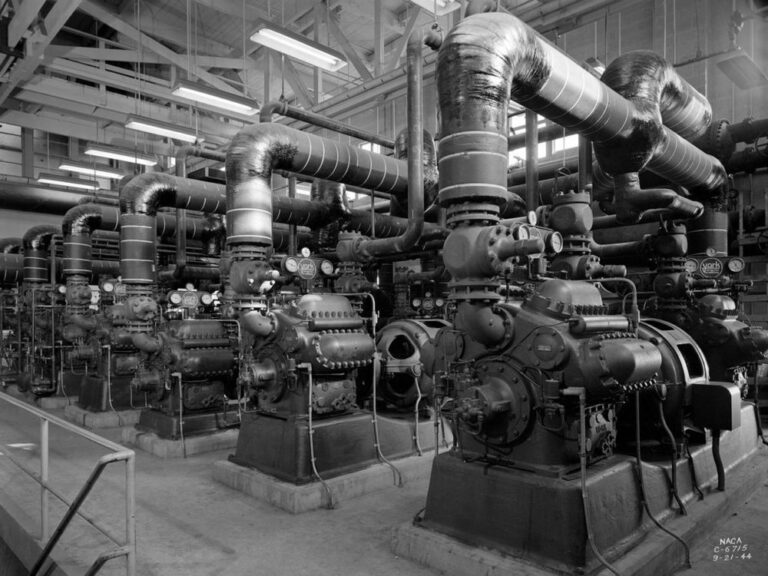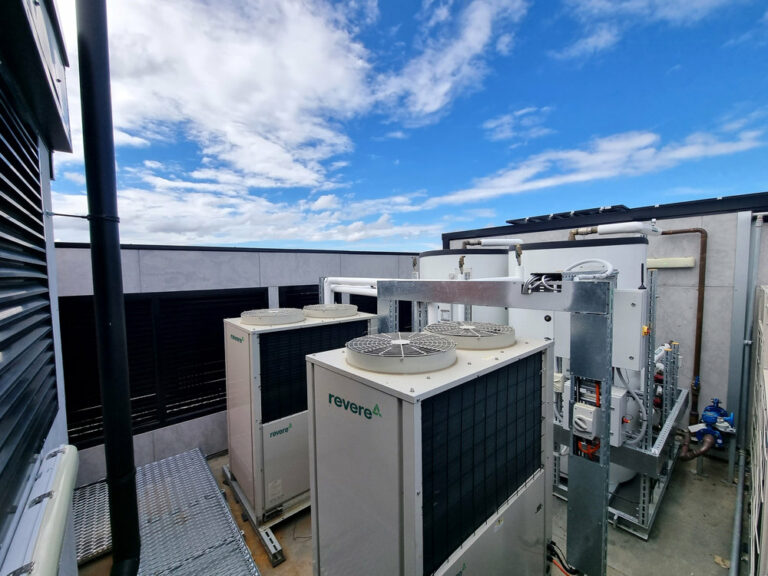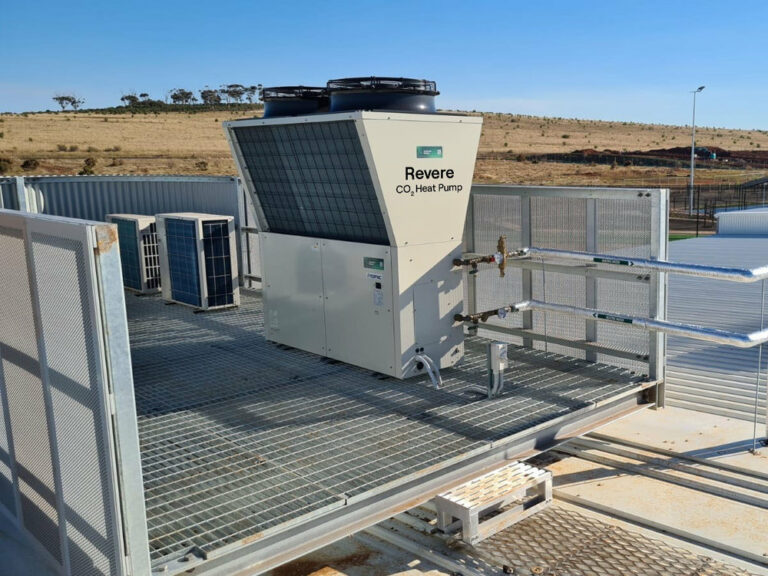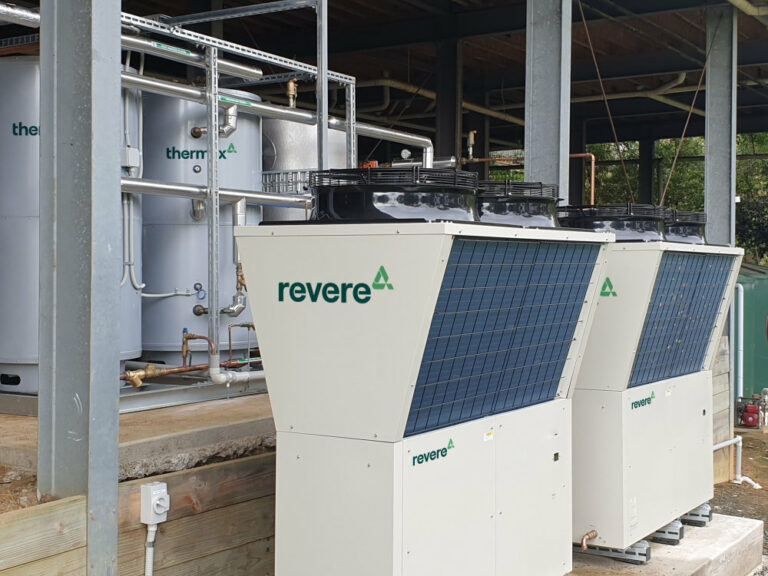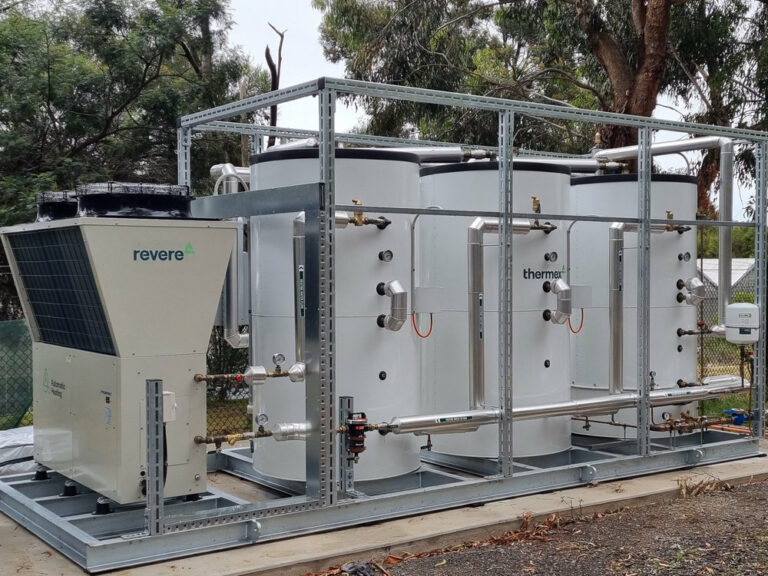Need to deliver a carbon-neutral built environment?
Why go carbon-neutral?
There are many advantages when choosing sustainable, energy-efficient, and carbon-neutral technologies. For heating systems, these advantages include:
- Reduced operating costs by saving money on energy bills
- Improved comfort for tenants, thereby increasing tenant retention;
- Future-proofing of assets, considering that building codes and standards are becoming more stringent;
- Competitive advantage in terms of operational efficiency and eco-friendly consumer preference;
- Government incentives for sustainable businesses; and
- Reduced long-term impact on the environment.
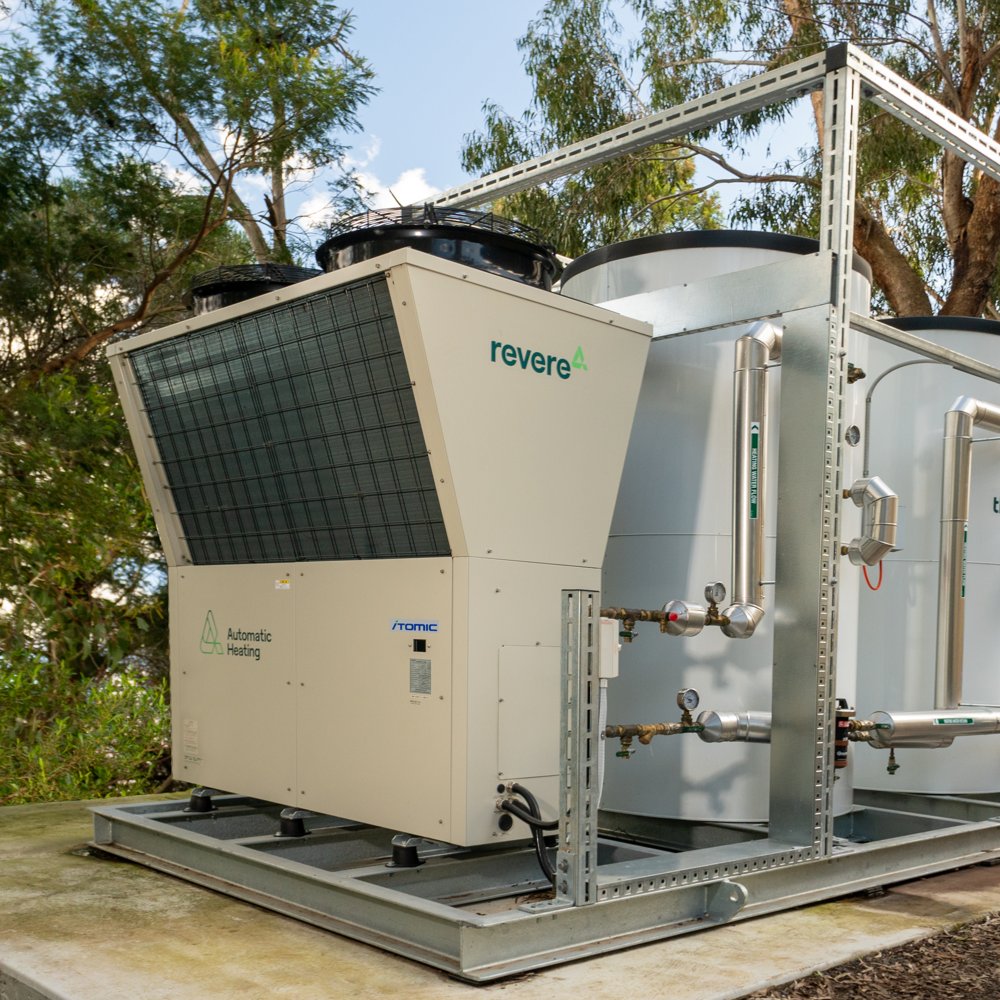
Achieving carbon neutral outcomes
Delivering heating solutions that achieve sustainable project outcomes is one of the core tenets of Automatic Heating. For Nightingale Housing, a commitment to sustainability also drives decision making. “Nightingale projects have to be carbon neutral in operation” says Nightingale founder Jeremy McLeod. “The single biggest emitter of carbon in the world is carbon emissions related to the built environment.”
To design an efficient and effective carbon neutral heating system for Nightingale Housing, Automatic Heating engineers assessed the project parameters, including the number and size of apartments, the solar array, supporting infrastructure and the required project deliverables. Based on these parameters, they then created a bespoke heating package that achieved the client’s performance and sustainability objectives.
Strategies used to achieve a carbon-neutral building included reducing emissions by specifying electric rather than traditional gas appliances. Electric heat pumps containing natural refrigerants deliver beneficial environmental, efficiency and financial results.
At Nightingale, a Revere CO2 Heat Pump together with insulated buffer tanks were installed for hydronic and hot water heating. The Revere CO2 Heat Pump system is powered by electricity, and utilises heat extracted from the air to produce heat energy. The use of natural refrigerant, supercritical carbon dioxide, reduces greenhouse gas emissions and enables energy conservation. With a Revere CO2 heat pump system, 1 kW of energy converts to 3.9kW of output energy, as opposed to a traditional heating system whereby 1kW of energy converts to 1kW output. Revere’s capacity to produce 90°C hot water makes it suitable for residential, commercial and industrial applications.
Using cutting edge technology and many decades of experience, Automatic Heating’s Engineering and Project Management team supplied highly efficient fossil fuel free systems to achieve measurable outcomes and cost savings for residents and helped the client realise their carbon neutral ambitions.
For advice on the best sustainable energy-efficient heating solution for your project, call our team to request a free consultation.
To learn more about carbon-neutral heating, check out these resources; or for our full guide to sustainable heating, visit A Guide to Sustainable Heating in Australia.
Carbon Neutral Heating FAQ
Carbon Neutral means that there is a balance between the emission of carbon dioxide and its sequestration from the atmosphere. In a business context, Carbon Neutral means reaching a state of zero carbon emissions by optimising operations to minimise carbon emissions, and then investing in carbon sinks (e.g., forests) to offset the remaining equivalent amount of emissions.
Carbon neutral buildings are buildings that produce zero net carbon emissions, either through the use of renewable energy sources or by offsetting any carbon emissions they do produce. This means that any carbon emissions produced by the building, such as those from heating or electricity use, are offset by actions that reduce an equal amount of carbon dioxide in the atmosphere. Examples of carbon neutral buildings include those that are powered by renewable energy sources, such as solar or wind power, and those that are designed to be highly energy efficient, reducing the amount of energy they need to function.
Net zero refers to the goal of achieving a balance between the amount of greenhouse gases released into the atmosphere and the amount removed or offset. This means that the overall level of greenhouse gases in the atmosphere is stable, and that any emissions are balanced out by actions to reduce or offset those emissions.
Net zero can be applied to individual actions, such as using renewable energy sources to power a home or business, or to larger-scale efforts, such as a country or region working to reduce its overall greenhouse gas emissions. The goal of net zero is to limit the overall amount of greenhouse gases in the atmosphere in order to combat climate change.
In practice, the term “net zero” is often used interchangeably with “carbon neutral,” which refers specifically to achieving a net zero carbon footprint by reducing or offsetting carbon dioxide emissions. However, “net zero” can also include other greenhouse gases in addition to carbon dioxide.
There is often overlap between the terms “carbon neutral” and “net zero,” and they are sometimes used interchangeably. However, there are some subtle differences between the two terms.
Generally speaking, carbon neutral means having a net zero carbon footprint, which means that the overall level of greenhouse gases, particularly carbon dioxide, released into the atmosphere is balanced out by actions to reduce or offset those emissions. This can be achieved through a variety of methods, such as reducing energy consumption, using renewable energy sources, and other activities that help to reduce or offset carbon emissions.
Net zero, on the other hand, refers to the goal of achieving a balance between the amount of greenhouse gases released into the atmosphere and the amount removed or offset. This means that while a net zero carbon emissions goal is similar to a carbon neutral goal, it can also include other greenhouse gases in addition to carbon dioxide.
In practice, the terms “carbon neutral” and “net zero” are often used interchangeably to refer to the goal of reducing greenhouse gas emissions and offsetting any remaining emissions in order to combat climate change.
Globally, the current goal is to achieve Net Zero emissions by 2050.
Carbon neutral heating systems are designed to produce heat without emitting greenhouse gases, such as carbon dioxide, into the atmosphere. This can be achieved through a variety of methods, such as using renewable energy sources, such as solar or wind power, to generate heat, or by using low-carbon fuels, such as biofuels or natural gas with carbon capture technology.
By using carbon neutral heating systems, individuals and organizations can help to reduce their carbon emissions and contribute to the goal of achieving net zero, which refers to the balance between greenhouse gas emissions and their removal or offset. This is an important step in combatting climate change and limiting the overall amount of greenhouse gases in the atmosphere.
In addition to using carbon neutral heating systems, there are many other ways that individuals and organizations can work towards achieving net zero, such as reducing energy consumption, using renewable energy sources for electricity, and engaging in other activities that help to reduce or offset greenhouse gas emissions.
Several countries have announced plans to achieve net zero greenhouse gas emissions by 2050. These include the United Kingdom, which was the first major economy to set this goal, as well as Canada, Japan, and the European Union, which have all committed to achieving net zero by mid-century.
In addition, several other countries have set their own ambitious targets for reducing greenhouse gas emissions and achieving net zero, though they have not specifically committed to reaching this goal by 2050. For example, the United States has announced a goal of achieving economy-wide net zero emissions by no later than 2050, while China has set a goal of achieving carbon neutrality by 2060.
It is important to note that achieving net zero by 2050 will require significant efforts and changes in many areas, including energy production and consumption, transportation, and land use. It will also require international cooperation and the support of governments, businesses, and individuals.
The Australian Government has communicated an updated and enhanced Nationally Determined Contribution (NDC) to the United Nations Framework Convention on Climate Change (UNFCCC) secretariat.
These documents were submitted on 16 June 2022 as part of Australia’s obligations under the Paris Agreement.
The updated NDC:
— Adopts a target of net zero emissions by 2050
— Commits to Australia’s low emissions technology stretch goals
— Reaffirms Australia’s target to reduce emissions by 26 – 28% below 2005 levels by 2030
— Adds Australia will exceed this by up to 9 percentage points
Australia now has a target to achieve net zero emissions by 2050, and a detailed and comprehensive technology-led plan to achieve it. Australia’s emissions projections 2021 demonstrate that we are already on track to reduce emissions by up to 35% below 2005 levels by 2030.
The low emissions technology stretch goals set out in Australia’s Long-Term Emissions Reduction Plan and Technology Investment Roadmap will enable us achieve this target.
Including our 2050 target and technology stretch goals in the NDC signals the strength of Australia’s conviction that they are fundamental to achieving net zero in Australia and globally.


